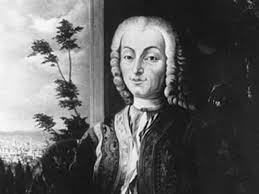
Bartolomeo
By passing by musicians of all kinds of backgrounds, hearing the variance in each of their distinct music produced, while walking down the subway platform in New York City; or by clicking on a playlist on Spotify titled “Morning Jazz,” incorporating groovy chord progressions; or maybe by purchasing a concert ticket and stepping into a grandiose hall with the audience prepared to be in full applause as the performer creates both soft, airy, and lively sounds and booming, aggressive, chaotic sounds simultaneously and harmoniously; or perhaps you are the performer on that glittering stage; the beauty of piano music inevitably blends into daily life of many, somehow. But the beauty of piano music, as we know it today, may not have been so popularized and familiar globally, may not have had its great functionality in comparison to its ancestral instruments, and most importantly, may not have existed at all without Bartolomeo Cristofori.
Bartolomeo Cristofori was born on May 4th, 1655 in Padua, a small city in the Republic of Venice at the time (modern-day Italy) and is located to the west of Venice. Although his childhood is covered in a shroud of mysteries and there is barely any information about his family, he likely trained as an apprentice under Nicolo Amati, one of the best luthiers of his time. However, his apprenticeship under Amati is often questioned as the only evidence of his apprenticeship from the 1680 census record, stating that a 13-year-old boy by the name of Christofaro Bartolomei lived in Amati’s house, opposes the fact that Cristofori’s baptismal record claims that he would’ve been 25 years old in 1680.
An entirely new chapter of his life began when he caught the attention of the son of the Grand Duke of Tuscany, Ferdinando de Medici in 1688. Prince Ferdinando recruited Bartolomeo to become his violin maker, musician, and technician; the Prince himself was a skilled harpsichordist with the possession of many instruments needing care. Cristofori soon moved from Padua to Florence in 1680, and he was paid a salary of 12 scudi for every month he worked on tuning, maintaining, restoring, and inventing instruments. As part of his job under Prince Ferdinando, Cristofori worked on inventing new instruments that were improved versions of already existing ones, especially the harpsichord since his occupation before working under the Prince was to build harpsichords.
Harpsichords are instruments that were invented in 1397 and look similar to pianos as they have keys lined up in the same pattern as a piano does. They can have 61 keys or double that because some are double manual, meaning it has two keyboards stacked in a stepwise fashion to create a tonality difference. This instrument produces sound when keys are pressed because they lift jacks which pluck the strings inside. Harpsichords can only produce sounds in one volume, therefore playing on one means that the music being produced would not have any dynamics or expressiveness. It developed from an instrument called a clavichord, which first appeared in the 1300s and produces sound when the pressed keys trigger metal blades called tangents to hit the strings.
Clavichords don’t produce enough volume for large performances, therefore, they were often used for other uses such as practices and working on compositions. The clavichord developed from an instrument called the hammered dulcimer, which was invented in the Middle East, several centuries before the clavichord’s first appearance. The hammered dulcimer is the earliest record of an instrument using all three of these elements: strings, soundboard, and hammer. A hammered dulcimer, unlike the following two major instruments developed from this instrument, was capable of producing sound at varying volumes, however, the quality of the sound was constant and therefore led to a limited expressiveness in music produced by a hammered dulcimer.
Approximately within a decade of beginning his work under the Prince, he invented two keyboard instruments: the spinettone and the oval spine. The spinettone is a large harpsichord with the strings directed in a slanted angle, also known as the spinet, extending further than the simple 1 by 8 feet disposition of most spinets.
The other of his earlier inventions, the oval spinet resembles a harpsichord with its keyboard and with how the sound is produced from the instrument, except the strings of the spinet were redirected from the typical layout and instead laid horizontally. parallel to the keyboard. The dulcimers also differed from the harpsichord in another aspect since their strings are longer in the middle. In addition to these inventions, he constructed already existing instruments such as the harpsichord and the clavicytherium, which is a harpsichord in an upright position.
Although it is doubted whether this evidence is factual or unreliable, it is claimed that one of the musicians of the Medici court noted in his diary that by 1968, Cristofori had started creating the piano. The 1700 inventory of the Medici court mentions the definite existence of the “pianoforte,” the name later cut down to the piano, which means soft and loud, highlighting the importance of the range in dynamics of the instrument.
After Cristofori observed some flaws in the harpsichord and considered solutions, he fused elements of a harp, dulcimer, and a keyboard to create the piano. He wished to enhance the harpsichord’s lack of expressiveness in its sound, The Medici inventory continues to convey the specifics of the piano, allegedly having four octaves, which approximately resembled the range of notes on a harpsichord. In a journal article written by Scipione Maffei, an author of many articles, Cristofiri is described as having already made three entirely functional pianos by 1711.
In 1713, quite soon after his successful creation of the piano, Ferdinando De Medici, Cristofori’s patron whose support was the reason why Cristofori made such a lasting impact on the world of music by inventing arguably the most popular instrument in the works, passed away. However, his death did not trigger any complications in Cristofori’s work since he was able to continue his work in the Medici court while simultaneously gathering purchasing customers all around Europe.
During the time that Cristofori sold his instruments across the continent, his most momentous sale was made by a Portuguese King. Despite the decline in the influence of the Medici Family, the dedicated inventor, and luthier continued to train his apprentices and to refine the quality of the piano with many versions, making sure that it had a wide dynamic range and immense expressive capabilities. Cristofori never quit building pianos, not even until his death on January 27th, 1731 in Florence.
As of today, there are only three pianos handcrafted by himself that have survived and remained. The oldest of the three was constructed in 1720 and is currently placed in the Metropolitan Museum of Art in New York, the second oldest piano from 1722 is housed in the Museo Nazionale degli Strumenti Musicali, a museum, in Rome, and the most recent made from 1726 is in the Musikinstrumenten-Museum of Leipzig University.
The piano has now gathered tens of millions of people globally who produce music on it. Every single day, someone creates gorgeous melodies, harmonies, and chords by thoughtfully pressing on the keys of an instrument which the man Bartolomeo Cristofori spent decades inventing and refining until his last breath. He had made sure that it was capable of producing contrasting dynamics, expression, and extraordinary versatility in general.
The piano is now in use in so many various ways for different occasions such as weddings, glorious concerts, and talent shows, at different locations including Carnegie Hall, home, and schools, for different people like prodigies who continue their training, professionals whose music sounds magical, and really for everyone to enjoy and be able to express their identity.
By: May Hachiya
Write and Win: Participate in Creative writing Contest & International Essay Contest and win fabulous prizes.


